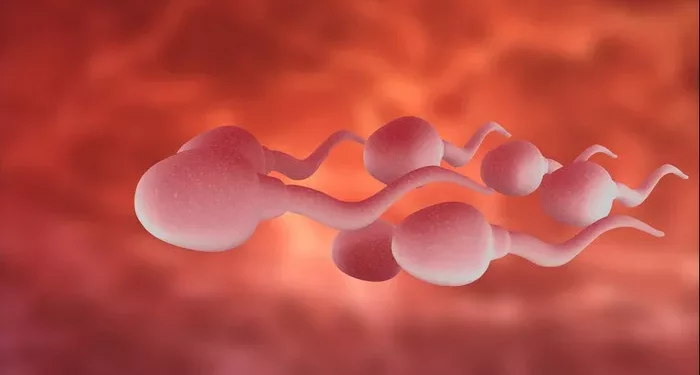Teratozoospermia is a condition characterized by the presence of sperm with abnormal morphology, affecting a man’s fertility. When sperm shape is significantly abnormal, it can hinder the sperm‘s ability to fertilize an egg, leading to challenges in achieving pregnancy. Severe teratozoospermia presents a more daunting challenge as it involves a high percentage of malformed sperm, which drastically reduces the chances of natural conception. This article focuses on the various treatment options available for severe teratozoospermia, providing hope and solutions for those struggling with this condition.
Treatment Approaches
Lifestyle Modifications
Lifestyle changes can have a profound impact on improving sperm health and overall fertility. Here are key modifications that can enhance sperm morphology:
Quitting Smoking: Smoking is known to adversely affect sperm quality, including morphology. Chemicals in cigarettes can damage sperm DNA, leading to malformed sperm. Quitting smoking can significantly improve sperm health over time.
Reducing Alcohol Intake: Excessive alcohol consumption has been linked to poor sperm quality. Reducing alcohol intake or abstaining altogether can help improve sperm morphology and increase the chances of conception.
Maintaining a Healthy Weight: Obesity is associated with hormonal imbalances that can affect sperm production and morphology. Maintaining a healthy weight through regular exercise and a balanced diet can enhance overall fertility.
Balanced Diet: A diet rich in antioxidants, essential vitamins, and omega-3 fatty acids can improve sperm quality. Foods high in antioxidants (such as berries, nuts, and leafy greens) help combat oxidative stress, which can damage sperm. Vitamin E, in particular, is known for its role in improving sperm health. Omega-3 fatty acids, found in fish and flaxseeds, also support healthy sperm development.
Specific Supplements: Certain supplements may offer additional benefits for sperm morphology. For example, Coenzyme Q10, L-carnitine, and folic acid have been shown to improve sperm quality in some studies. However, it is crucial to consult a healthcare provider before starting any supplementation to ensure safety and effectiveness.
See also: An Overview of Azoospermia: Causes, Diagnosis, and Treatments
Addressing Underlying Causes
In some cases, teratozoospermia is linked to underlying medical conditions. Addressing these conditions can improve sperm morphology:
Treating Infections: Infections in the reproductive tract can negatively impact sperm quality. Treating infections with appropriate antibiotics or antiviral medications can restore normal sperm morphology.
Hormonal Imbalances: Hormonal imbalances, such as low testosterone levels, can affect sperm production and quality. Hormone therapy may be recommended to correct these imbalances and improve sperm morphology.
Varicoceles: A varicocele is an enlargement of veins within the scrotum that can impair sperm production and morphology. Surgical correction of varicoceles (varicocelectomy) has been shown to improve sperm quality in many cases.
Assisted Reproductive Techniques (ART)
For severe teratozoospermia, assisted reproductive techniques (ART) offer a viable path to conception. These methods help bypass some of the natural barriers to fertilization posed by abnormal sperm morphology.
Intrauterine Insemination (IUI): IUI involves placing washed and concentrated sperm directly into the uterus around the time of ovulation. This technique is generally more effective for mild cases of teratozoospermia and may be less successful for severe cases where sperm morphology is significantly compromised.
In Vitro Fertilization (IVF): IVF is a more advanced ART technique suitable for severe teratozoospermia. The process involves stimulating the ovaries to produce multiple eggs, retrieving these eggs, and then fertilizing them with sperm in a laboratory setting. This controlled environment allows for better selection of healthy sperm.
Intracytoplasmic Sperm Injection (ICSI): ICSI is often used in conjunction with IVF, particularly for severe teratozoospermia. In ICSI, a single healthy sperm is directly injected into an egg, increasing the chances of fertilization. This technique is highly effective for overcoming severe sperm morphology issues.
Intracytoplasmic Morphologically Selected Sperm Injection (IMSI): IMSI is an advanced form of ICSI that uses high-magnification microscopy to select the healthiest sperm. This technique allows embryologists to choose sperm with the best morphology, further enhancing the chances of successful fertilization and embryo development.
See also: A How-To Guide: Can Non-Obstructive Azoospermia Be Cured?
Considerations and Prognosis
Consulting a Specialist
It is essential for men with severe teratozoospermia to consult a urologist or fertility specialist. These professionals can perform a thorough evaluation to identify any underlying causes and recommend an appropriate treatment plan tailored to the individual’s needs.
Success Rates of ART
The success rates of ART procedures can vary based on several factors, including the severity of teratozoospermia, the age of the female partner, and overall reproductive health. However, ART techniques like IVF and ICSI have demonstrated significant success in helping couples achieve pregnancy despite severe sperm morphology issues. Studies have shown that ICSI, in particular, offers high fertilization rates and can lead to successful pregnancies in many cases of severe teratozoospermia.
Conclusion
Severe teratozoospermia can pose a significant challenge to natural conception, but there are effective treatment options available. Lifestyle modifications, addressing underlying medical conditions, and utilizing advanced ART techniques such as IVF, ICSI, and IMSI can greatly improve the chances of achieving pregnancy. Consulting with a specialist is crucial for developing a personalized treatment plan. With the right approach, many couples can overcome the hurdles of severe teratozoospermia and achieve their dream of parenthood.
Related Topics:
A How-To Guide: Can Non-Obstructive Azoospermia Be Cured?



























